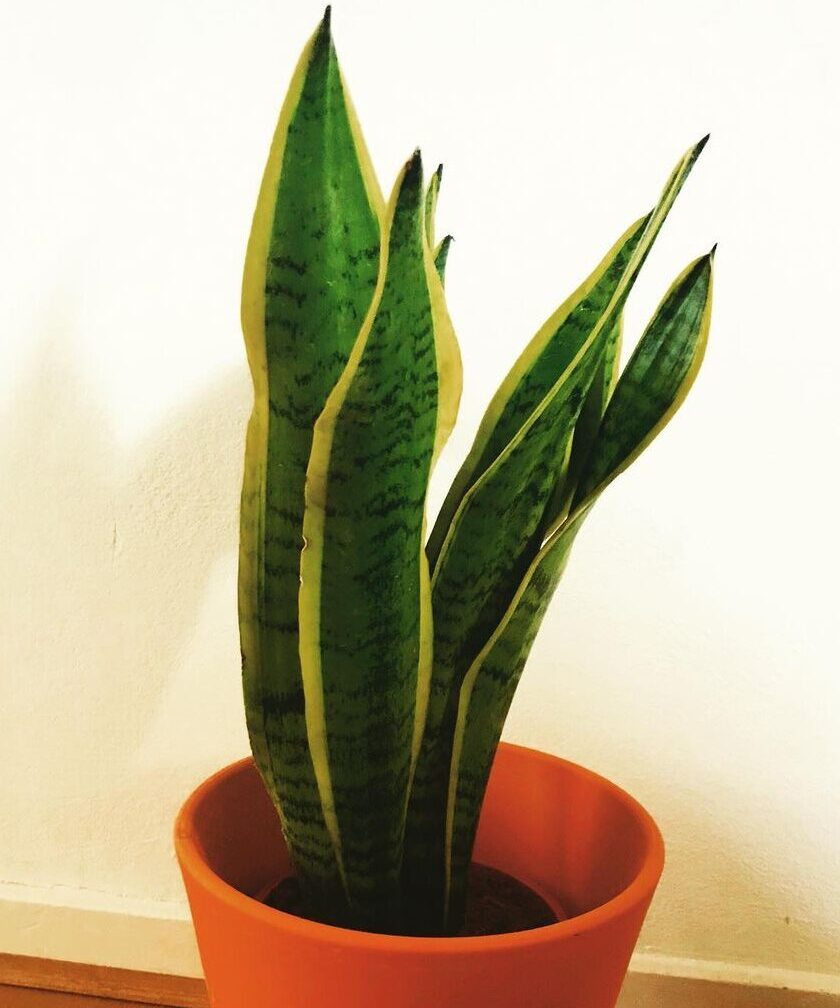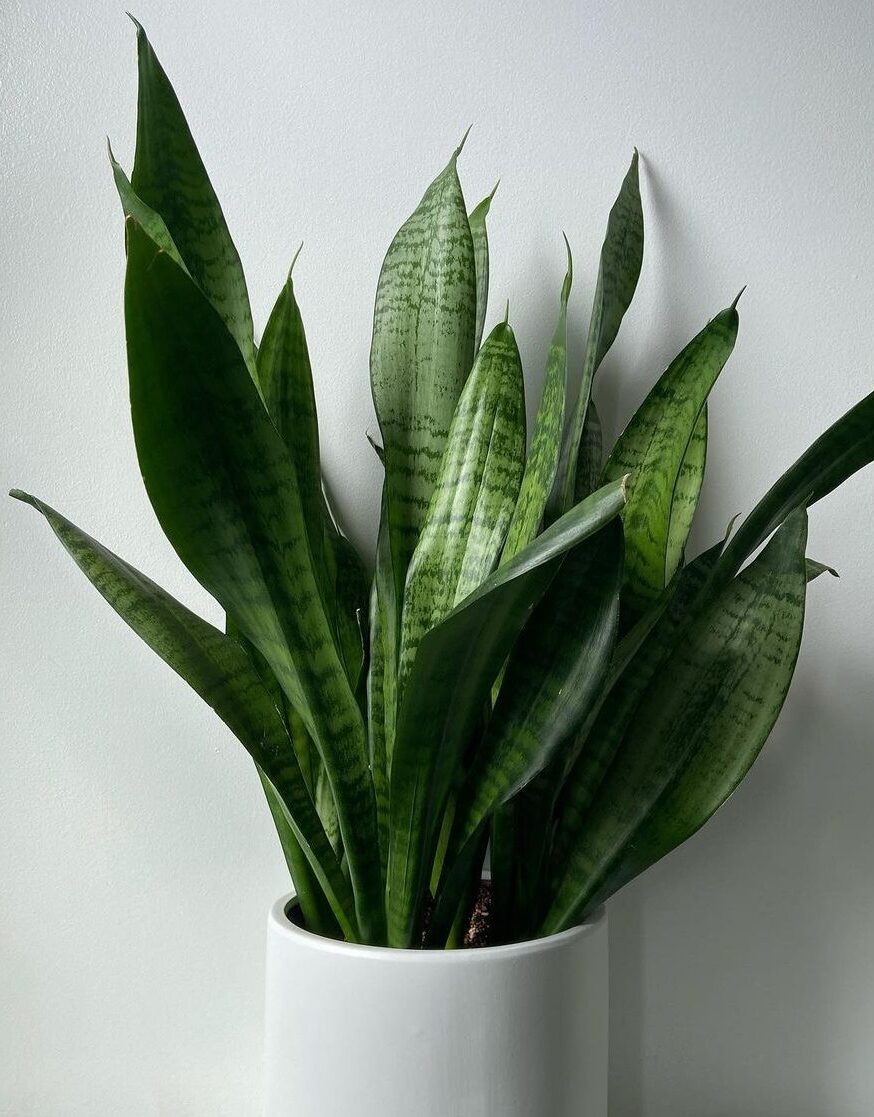Snake plants (Dracaena trifasciata) are admired among houseplants for their gorgeous slender foliage with yellow stripes.
Snake plants are not generally grown from seeds because of their genetic variability.
This article will go through each step of growing snake plants from seeds and everything you need to know about it.
Are Snake Plant Seeds Available in the Market?
In general, you can not find snake plant seeds in the market because the Snake Plant seeds are short-lived (dry seed is of no use).
But if you really want to do it, you can buy fresh fruits from the nursery to extract seeds.

Sometimes, the fruit has two seeds, and you can say the luck is on your side because you will have two sprouts.
Note: You should never eat the fruit of a Snake Plant because it is poisonous. So are its leaves. If you or your pets ingest a leaf accidentally, you might have symptoms like salivation, nausea, and vomiting.
The Color of the Seeds and Fruits
The fruits that the nursery owner or acquaintance has given you might be orange, green, or light green. The orange one is ripened, while the green one is immature.
Both are appropriate for planting. The seeds of the orange ones are light yellow, and they come out easily as you peel out the fruit skin as take out the pulp.
Do you find the pulp of the orange fruit jelly in nature? Yes, you do.
Some people rinse this pulp out with water before planting because they want a high chance of germination rate success and do not want fungus to attack the seeds.
But this is not the best way because you can plant the green fruit directly into the soil in a pot.
But it sprouts the best in an indoor area than in an outdoor one.
This tells you that it is a house plant. Therefore, when you plant the seeds of Snake Plant in a pot outdoors, you should do it in a shaded area.
Importantly, spraying Neem oil will ensure pests & pathogens do not harm the Snake Plants.
Step-by-Step Guide to Grow Snake Plants from Seeds
The late winter is the best season to plant seeds; however, some prefer planting before the rainy season. Let’s go through the step and step guide to grow snake plants from seeds.
Step 1: Preparation for Germination of Snake Plant Seeds
- Take out the seed from the fruit and rinse them properly with water.
- Ensure you have rinsed the seed properly, as it contains chemicals and might spread throughout the soil.
- Take a moist paper towel and put it in a Ziplock bag. Gently transfer the rinsed seed into the Ziplock bag.
- The temperature should be maintained at the warmth of 65-75°F.
- Use the dome to increase the humidity. The use of 9 watts LED lights will germinate the seed.
- After a day or two, you will see white roots coming out. Gently transfer the seed to the soil mixture.
Plant it in your garden or a pot inside your room as soon as possible. The reason is to prevent the seed from drying.
Remember that the soil must be moist to favorably enhance the Snake Plant’s growth.
Step 2: Planting the Snake Plant Seed in Pot
- Transfer the seed to the pot.
- Depending on the effect you wish to achieve, position your plants 6–36 inches (15.2 cm) apart when planting.
- You can plant the fruit directly or the seed half an inch deep in the soil.
- Don’t dip the seeds too deep.
- You can also plant it in a mixture of manure and river sand, or you can do it in Coco Peat or the African Violet Soil.
After this, you need to wash your hands properly, as the seeds of snake plants are toxic for you and your kids.
Benefits of using Coco Peat on Snake Plant’s Seeds
- Coco peat yields a high-end result because it has an anti-fungal property.
- It is full of nutrients that the seeds need.
- It has perfect moisture.
- It is soft; for a reason, the germination will take quickly.
Benefits of using African Violet Soil on Snake Plant’s Seed
- African Violet Soil is best as it has soil perfect for drainage.
- It has fertilizers that the seed of the snake plant needs for 25 days or sprouting.
However, I have seen a high success rate in sprouting in the Coco Peat.

Step 3: Watering the Seeds
- After planting them, water the seeds and ensure they are moist enough.
- Do not water it daily because the sprouts will absorb the water and survive without it for 7 days.
- For the best result, water the soil till your finger reaches half an inch or two inches and finds dryness under the surface.
- Overwatering will kill the sprouts.
They are drought-resistant. That’s why some growers prefer planting the seeds in a pot with small holes on the bottom so that extra water will drain.
It is recommended not to plant the seed of a Snake Plant in a garden; a pot is a better option and alternative.
I have seen a fully grown healthy Snake Plant with small pots. But the disadvantage of small pots is that they are root bound, and you must do repotting in the future.
Step 4: Caring for the Planted Seedlings
Pay attention to details like damping off, nutrition, temperature, water, and light.
Put your small coco peat inside as the sprouts grow well indoors than outdoors. However, if you prefer keeping pots outdoors, keep in mind you put them in a shaded area.
Seedlings should not be exposed to temperatures below freezing for more than a few hours or above 80°F (27°C) since this can inhibit root growth.
Too much water can destroy delicate roots, while too little might cause your new babies to shrink and even die.
When will you get the Result?
To turn these seeds of Snake Plant into sprouts or seedlings, you will have to wait for around 25 days.
While they change their forms, you should keep the pot away from direct sunlight from day one.
It’s good to place the pot 4-5 feet away from your room’s window and keep the temperature at 27°C.
You will see the new young sprouts almost after 4 weeks. Sometimes, all these seeds do not change into sprouts, but most will.
Plants that have sprouted many seeds in the same cell or container should be thinned for a better result.
How can you Protect the Sprouts?
If you have grown the seeds in a pot outdoors, the sprouts may be vulnerable and attacked by insects. In such a case, you can use a pesticide.
You must keep the pot in a low-light area. Here low light means in a shaded area.
Some seeds are still on the way to sprouting out when. You can see their tiny leaves coming out from the soil when you compare their features with other sprouts after 25 days.
If the seeds have sprouted 100%, then you are an achiever.
The Result will Surprise you
All the sprouts do not have the same physical features.
Some are green, while others are light green; some have broad leaves, some do not have, and some even have curly features on their blades and tips.
You will have Snake Plants with different features when they mature from the same seeds. And their life expectancy is from 5-25 years.
After a Seed and Sprout, what is the Next?
From the above, you see the seed and the sprout are easy to grow.
You don’t have to water them every day. The most important factor is light. Snake plants can grow in multiple sunlight conditions. It will help if you avoid direct sunlight.
Things to Remember While Repotting the Sprouts
After 25 days, you will see tiny little sprouts coming out. Since the small sprouts are coming out, you don’t have to repot it quickly.
However, the Plants grown in peat cells should be moved to a larger pot to accommodate future growth.
You know it’s time when you can see roots coming out of the bottom of the cell. To prevent injuring the stem by lifting the seedlings, spoon them out. Again, use nice sterile soil and water them thoroughly right away.

Since this is the first year for the sprout, you have to repot in a small pot and include the following things.
- A mixture of garden soil and sand, each 40% and 20%, should be used with eggshells and tea leaves.
- Or a mixture of soil and Pumice (40%)
- Or a mixture of soil, peat, or coir. You can add 20-30% of Peat or Coir.
- Or a mixture of soil and Perlite (40%)
The above-mentioned is not compulsory because you can also use a mixture you have heard from your friends, relatives, or nursery owners.
Is there any other way you can grow Snake Plant?
Yes, there is. They can be grown from leaves in a glass half full of water with the help of propagation.
But first, the snake plant’s leaves must be propagated, and the base of these leaves must be underwater.
After 20 days, you will see some rooting, but more often, after 30 days.
During these days, the water will change its color. When you observe this, you will have to change the water.
After 90 days, you will see lots of roots. This indicates you have to repot the leaves in a mixture containing Coco Peat and garden soil, or you can do repotting in your favorite mixture.
From Editorial Team
Conclusion!Now that you’ve learned everything there is to know about growing snake plants, go ahead and put some in your garden.

1 comment